As the year draws to a close I thought I'd have a look back over some of the best hoverflies I saw this year, and look forward to some more hoverflying next year.
10: Xanthogramma citrofasciatum
A trip to the downs to look for Duke of Burgundies was unsuccessful, but my first ever sighting of this chalk grassland specialist was a fine consolation. Superficially similar to the widespread X.pedissequum, this is a larger fly, with contrasting orange legs and thinner stripes on the abdomen.
9: Leucozona lucorum
Not a rare species by any stretch, but one I'm always pleased to see, and I was particularly pleased to see it in my new garden, and to get some nice pictures of it as well. For a few weeks these were a constant presence on the forget-me-nots, along with lots of Playcheirus albimanus
Not a rare species by any stretch, but one I'm always pleased to see, and I was particularly pleased to see it in my new garden, and to get some nice pictures of it as well. For a few weeks these were a constant presence on the forget-me-nots, along with lots of Playcheirus albimanus
8: Dasysyrphus pinastri
The gardens at The Lodge RSPB are a fantastic location for hoverflies, and will feature a few times in this post. On 17th June this year I'd already found some nice species on the main flowerbeds when my eye was drawn to a slightly different looking hoverfly on a buttercup. It had the thin yellow curves of a Dasysyrphus, which on closer inspection proved to stop before the sides of the abdomen, meaning that this is Dasysyrphus pinastri, a new species for me. (there's a small chance it's the similar looking D.pauxillus, which has only recently been added to the UK list, but the colour of antennae suggests pinastri.
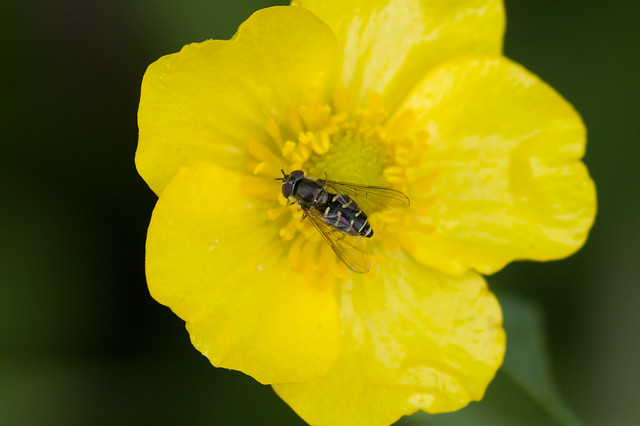
7. Volucella bombylans
A break from The Lodge, and a journey down to the south-west for a few hoverflies from a week in Cornwall at the end of June. First another fairly common species, but one that I always enjoy seeing, with its excellent bumblebee mimicry.

6. Chrysotoxum elegans
Still in Cornwall, and strolling down the coast path on the Roseland peninsula I noticed a Chrysotoxum flying low over the path, and managed to get a quick photo before it flew off again. More by luck than judgement I managed to get enough of the fly in focus to be able to tell that this is Chrysotoxum elegans, a south-west speciality and a first for me.
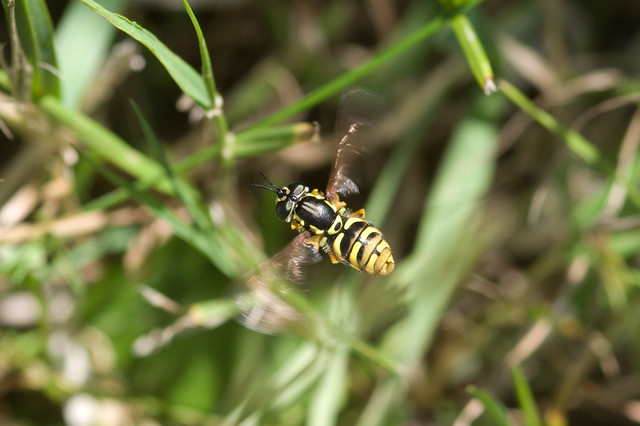
5. Ferdinandea cuprea
Probably the hoverfly I was most excited to see all year. After seeing loads of photos of these on the facebook group I was getting increasing irritated by my inability to find one, so I was very excited when a shiny fly on the trunk of a tree at Trelissick Gardens turned out to be Ferdinandea cuprea. It's a lovely looking hoverfly with a shining golden abdomen contrasting with the matt silver and black thorax. Like London buses another was soon along - I had one in my garden the week after!
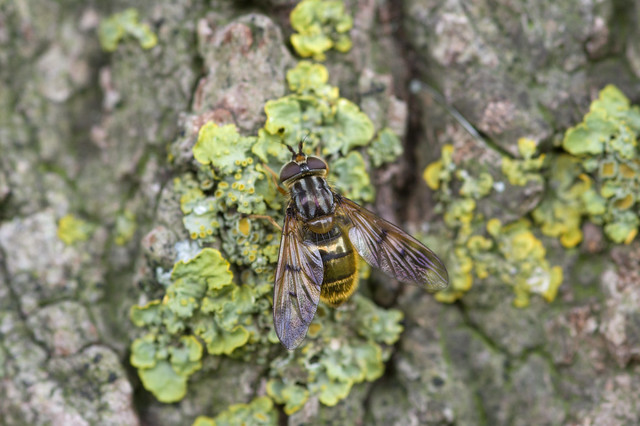
4. Eristalinus aeneus
The final entry from Cornwall, and a proper coastal specialist, whose larvae develop in seaweed. This one was found on soft rock cliffs on Pendower beach, where during the course of my explorations I also had the unusual experience of making an adder jump when I stepped round a corner and surprised it basking at the foot of the cliff.
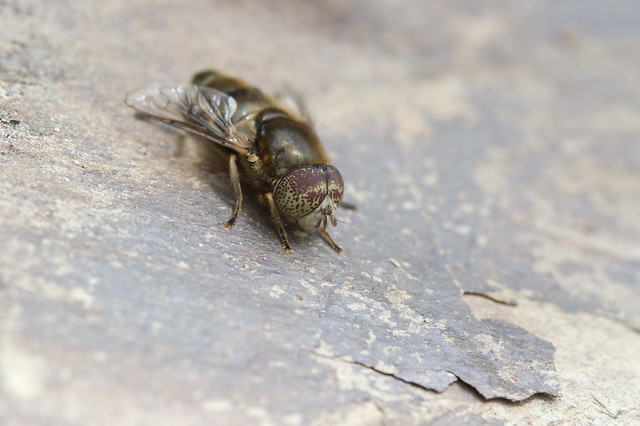
3. Riponnensia splendens
Back to The Lodge for the next entry, a rather unusual looking hoverfly with distinctive orangey-green eyes. I'd never seen it before this year, but it seemed to be regular around the fennel in the gardens towards the end of August, so maybe I'd just over-looked it in previous years.

2. Cheilosia soror
A final entry from The Lodge, and the only Cheilosia to make the list, partially because I rarely manage to identify them. With a bit of help from the facebook group I got this one to Cheilosia soror, a localised species of southern england, with orange antennae and a two-toned scutellum. One of my aims for next year is to find and identify a few more Cheilosias, out of the 38 UK species I've only ticked off six!
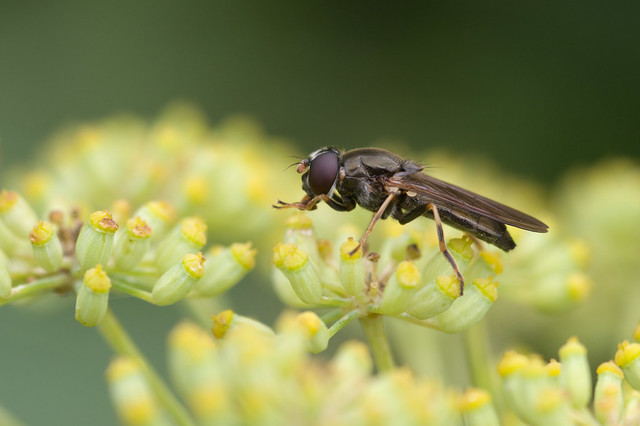
1. Rhingia rostrata
The final entrant in my top 10 for 2015, and the wackiest looking of the lot. There are two Rhingia species in the UK, the common R.campestris which is a frequent sight in gardens, and the rarer R.rostrata, which I'd only ever seen once before this one turned up out of the blue in my garden. The two species are similar in appearance, both having the odd beak like projection, but rostrata lacks the black margin to the abdomen sported by campestris, and is a generally more brightly coloured fly. It was previously a rarity in the UK, but seems to have spread dramatically in recent years.
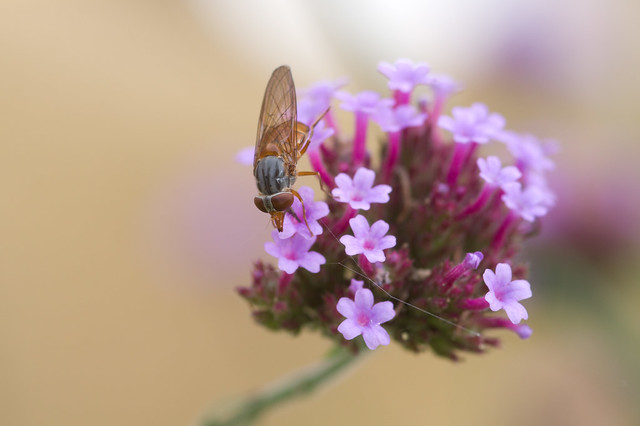
With 2015 pretty much over, my thoughts are turning to 2016 and what hoverflies I might be able to see. As I've already said, improving my Cheilosia list would be good, ten species seems like a good target. I'd also really like to see at least one of the Criorhina species, three spring flying bumblebee mimics that I've yet to find. Last but not least, I think I need at least one trip to a good wetland site, to look for species such as Tropidia scita and the Anasimyia species.
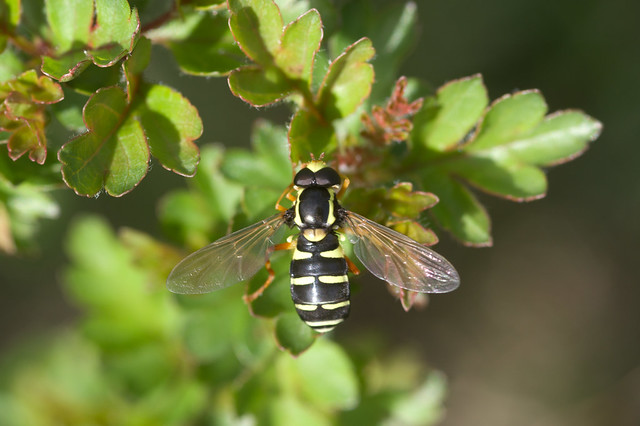
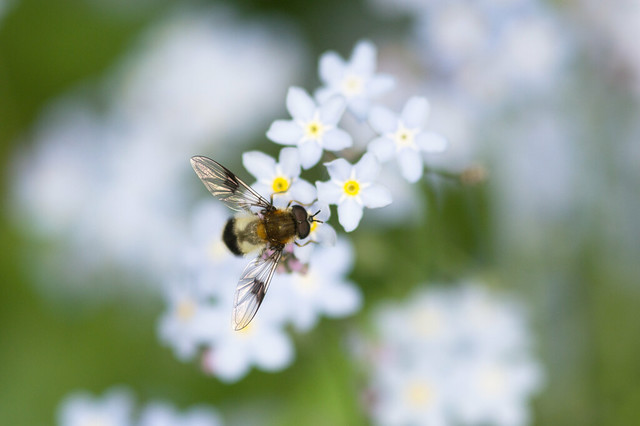
Your photography is brilliant. I especially like the Leucozona lucorum on the forget-me-nots; very fresh and sweet!
ReplyDelete